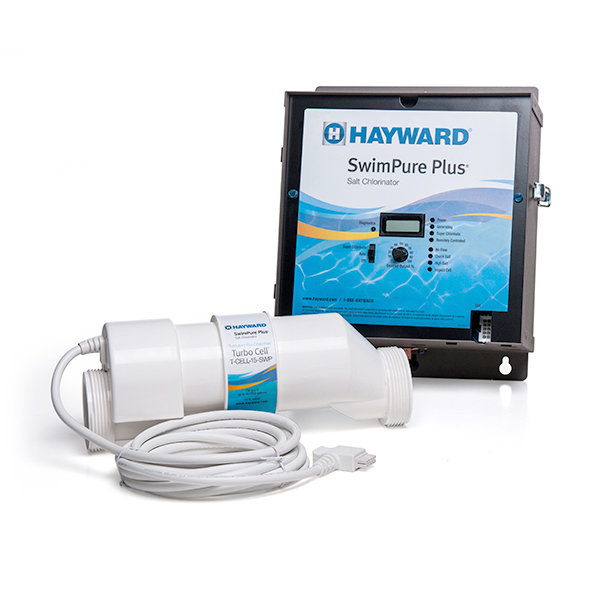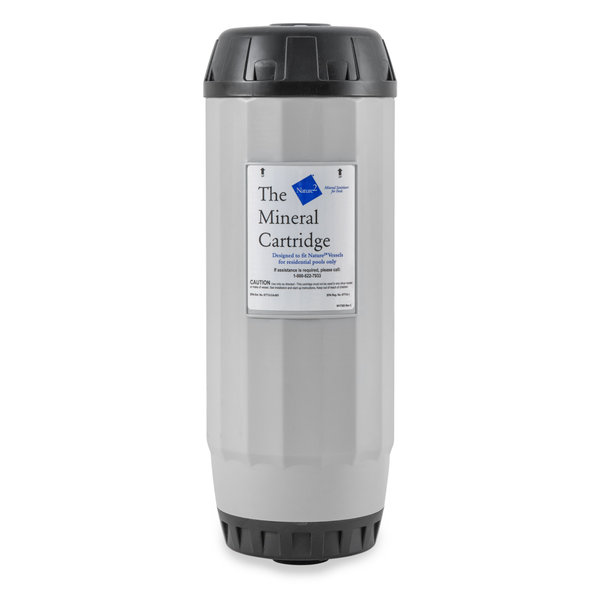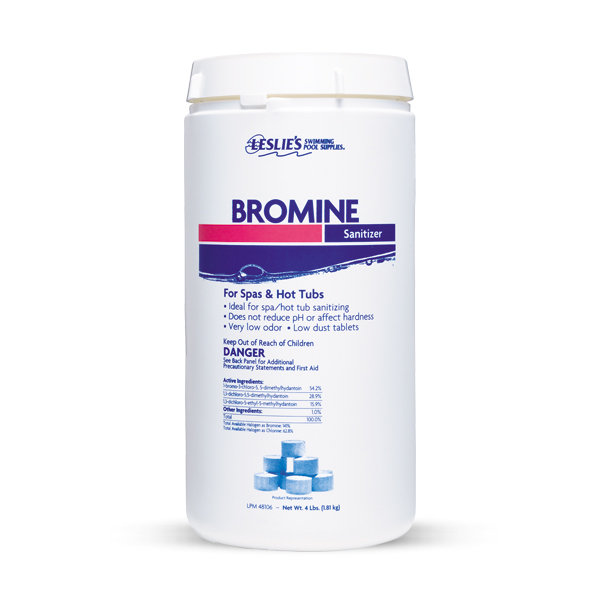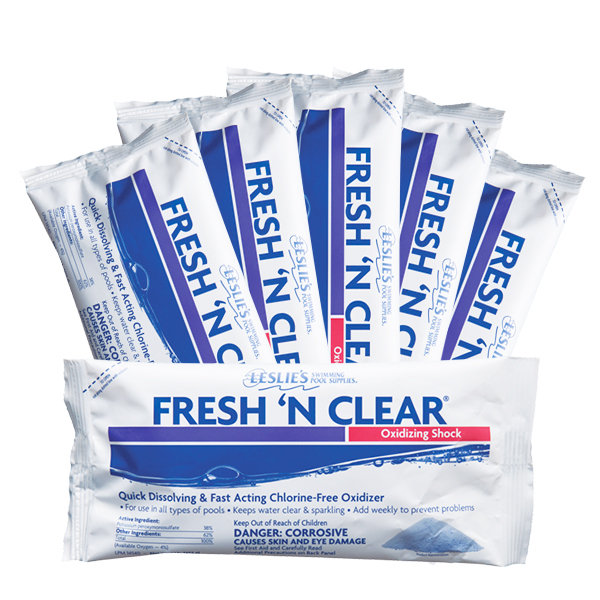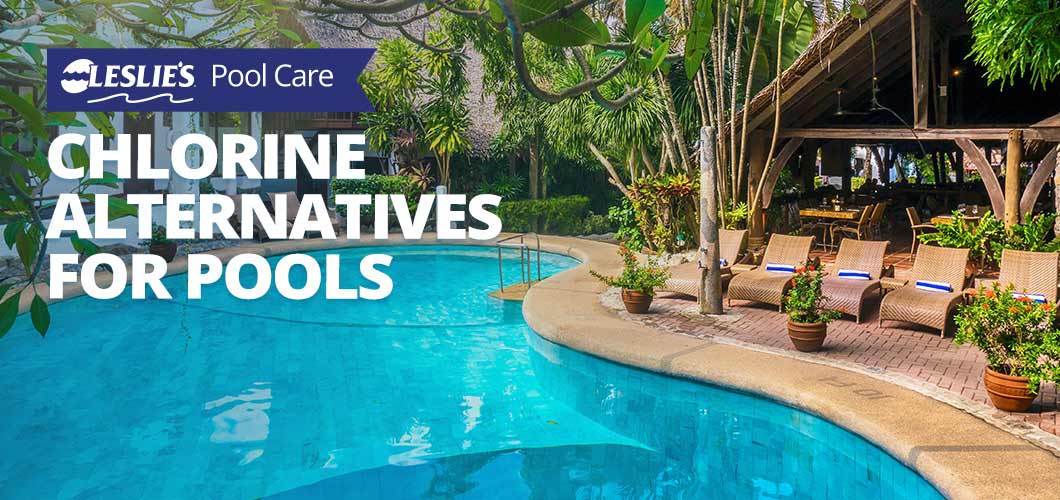
Chlorine Alternatives for Swimming Pools
Chlorine is the most common sanitizing choice for pool owners, but is it the best? Chlorine and chloramines have long been blamed for causing red eyes and skin irritation for swimmers, motivating some pool owners to look elsewhere for their sanitation needs. But which chlorine alternative is best? And what's the difference between the different types of sanitizers?
It's actually a question we hear a lot. But a lot of it comes down to personal preference, benefits offered, and ease of maintenance. To help you make the right choice for your pool and lifestyle, we've put together this informational guide to teach you more about the most popular alternative sanitizers.
Saltwater Chlorine Generator
Salt has become popular as an alternative way to generate and maintain Free Available Chlorine levels, providing an enjoyable swimming experience. Pool salt systems use salt in the pool water to generate chlorine through electrolysis. Salt water passes through a salt cell, where it receives an electric charge, converting it into chlorine. It does this consistently to keep the Free Available Chlorine level steady and chloramines low.
Free Available Chlorine is what keeps your water clean, clear, and sanitized. However, if your pool smells like chlorine, there’s a good chance that it actually needs MORE chlorine, as you may have a high chloramine level. Chloramines, or combined chlorine, are the real reason you hear about skin irritation and the “chlorine smell.” Chloramines happen when your Free Available Chlorine has combined with ammonia and other swimmer wastes. To remove chloramines, all you have to do is shock or superchlorinate the water. This is where saltwater pools excel, and it is a large part of what makes them so desirable.
Under normal conditions, chloramine levels are kept to a minimum as the system generates chlorine. The mild salinity provides comfortable water that does not irritate the skin or eyes. In addition, salt is usually cheaper than other pool chemicals. But keep in mind, salt cells need occasional cleaning to prevent calcium buildup, and they do not last forever. Also, the pH of the water will rise due to the electrolysis process. Expect to replace your salt cell every 3–5 years.
More information:
- Powerful water sanitation
- Creates soft-feeling water
- No more buckets of chlorine
- High initial investment, low maintenance cost
- Salt cell will need replaced every 3–5 years
Ozone Pool System
Ozone systems provide clean, clear, and safe water for your pool, while significantly reducing chlorine requirements by 60–90% if properly sized. This sanitizer also removes eye and skin irritants from pool water. Sounds like a safe bet to us! There are two types of ozonators: ultraviolet light (UV) and corona discharge (CD). Typically, ozone generators are reliable and designed for a long service life. Ozone generators are designed with a highly reliable cell that can last up to 5 years before replacement is needed. If you are looking for the most scientifically advanced pool water sanitation, an ozone sanitizer system is the optimal choice for residential pools.
More information:
- Powerful water sanitation
- Creates soft-feeling water
- Reduces the amount of chemicals
- Prevents calcium scaling on surfaces and equipment
- pH neutral
- High initial investment
- Used in combination with a residual sanitizer (chlorine or bromine)
Mineral Pool System
There are a few types of mineral pool systems, which are alternative sanitizers that can reduce chlorine use by up to 50%. The most popular systems use an easy-to-replace cartridge, and are installed in the return line of the pool. These types of mineral systems kill germs as they pass through the cartridge. Replacement is simple with the pre-filled cartridges. There are also other types of mineral systems, including floating sanitizers and skimmer inserts.
Mineral systems have a lower initial investment cost than a salt chlorination or ozone system, but the mineral cartridges require more frequent replacement — about every 6 months. They also require some residual chlorine in the water to oxidize organic material in the pool.
More information:
- Very low maintenance
- Creates soft-feeling water
- Cuts chlorine use up to 50%
- Controls algae and bacteria
- May have a high initial investment, depending on system
Bromine Tablets
Bromine is typically used in spas and indoor pools as a chlorine alternative. This is because Cyanuric Acid (CYA), which protects chlorine against “burning off” from the sun's harsh UV rays, does not work with bromine. Since indoor pools and spas are often completely covered to block sunlight, CYA is not as important. Bromine is not recommended for outdoor pools or spas that aren't covered.
The good news is that bromine is more stable than chlorine in warmer temperatures, making this sanitizer the premier option for hot tub and spa owners.
More information:
- Great for hot tubs, spas, and indoor pools
- More stable than chlorine in high temperatures
- More expensive than chlorine tablets
- Reduces skin irritation and red eyes
- Cannot be stabilized against the sun's UV rays
Non-Chlorine Shock
Non-chlorine shock treatment is a great chlorine alternative for oxidizing organic pollutants, such as body oils, sunscreen, sweat, and urine. Unfortunately, non-chlorine pool shock can’t kill living contaminants or sanitize the water on its own. This is because, as the name indicates, it does not contain chlorine. Non-chlorine shock still needs an additional sanitization method, such as chlorine or bromine, to sanitize a pool.
Oxidizing the organic pollutants helps keep chloramine levels low so Free Available Chlorine can work effectively. Non-chlorine shock is great for indoor pools or pools with a high bather load.
Sunlight will help oxidize some organic pollutants naturally, so non-chlorine shock is popular for indoor pools with little-to-no exposure to sunlight. Hot tubs also use non-chlorine shock to oxidize (chemically cleanse and remove) dead organic matter. This allows your primary sanitizer to destroy harmful microorganisms, such as bacteria and viruses, and kill and prevent algae.
More information:
- Great for hot tubs and indoor pools
- Safe to swim 15 minutes after application
- Requires a residual sanitizer
- Higher price than chlorine shock
- Safe to use with chlorine, bromine, and mineral systems
In addition to the alternative sanitizers listed above, there are also other ways to keep your pool sanitary. UV sanitizers use UV light to sanitize water, and are sometimes used in conjunction with ozone systems.
There's also another type of sanitizer chemical called biguanides, which is a non-chlorine sanitizer. This product requires a separate oxidizer (hydrogen peroxide) and algaecide. Biguanides are not as popular as other sanitation methods, and are incompatible with certain types of pool chemicals.
If you need help deciding between chlorine alternatives or want to learn more about how they're used in the pool, we can help. Stop by or contact your local Leslie's store to speak with one of our pool experts.
